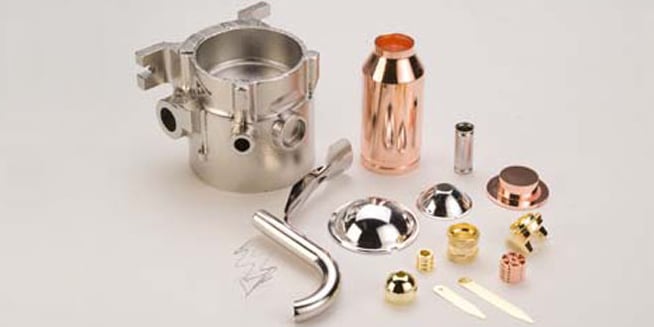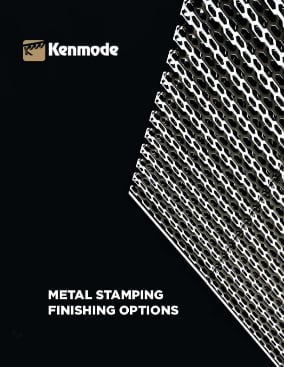Because the metal stamping process puts metal under enormous pressure in order to achieve the desired form, components may require polishing after stamping to improve function or appearance or both. The use of pre-polished metals also may not be suitable due to the potential for damage to the finish during stamping. Electropolishing may be the optimal finishing option, depending on the following considerations:
- Size and type of part
- Long-term function of the part
- Metal composition
- Cost per part
- Specific industry requirements
Designing a Stamped Part with Metal Polishing in Mind
Before a stamped part ever goes into production, metal stamping engineers and their suppliers, including specialized polishing firms, can help manufacturers navigate their polishing options.
“We love to give guidance to metal stamping and OEM engineers who are developing new parts,” explains Tom Glass, C.E.O. of Able Electropolishing of Chicago. His firm’s “Finish First” methodology ensures that new parts are designed with the proper finish in mind, which can avoid potential problems down the road, such as metal fatigue. Their technical team works hand in hand with metal stamping engineers and their OEM clients on R&D and sample polishing of prototype parts so that the polishing method will achieve the optimal finish, which is usually the last step in a part’s production process.
“Manufacturers may not realize that electropolishing actually removes some of the material from the stamped part, which can change its dimensions,” Mr. Glass observes. “A common misconception is that polishing means adding some type of chrome finish. That’s why it’s crucial to do a test run of the polishing process to ensure that the part will perform to specifications.”
Electropolishing Benefits for Metal Stamped Parts
Different methods of electropolishing achieve different end results and operational benefits, such as:
- Boosting corrosion resistance
- Deburring minor flaws
- Improving fatigue life
- Addressing potential failure sites
- Refining the size
- Performing ultra-cleaning
- Adding decorative finishes and colors through anodizing
Electropolishing
How Electropolishing Works
Electropolishing removes the outer layer of metal and any contaminants by immersing the parts in a tank filled with a blended chemical electrolyte bath that is then subjected to an electrical current. The parts are then run through cleaning and drying steps to remove any electrolyte residue. Electropolishing is also known as “reverse plating,” as the process looks similar to plating and results in a smooth finish. Rack electropolishing, used for complex metal stampings with close tolerances, makes contact with each part. The more economical bulk electropolishing is used for small parts such as fasteners and springs that do not require the same consistency in material removal.
Advantages of Electropolishing
Although an expensive option, electropolishing offers the highest level of corrosion resistance, which can be particularly important to automotive, aerospace and medical device manufacturers. Able Electropolishing estimates (based on salt spray testing) that electropolished parts perform 30 times better in resisting corrosion than those that have undergone passivation. In addition, electropolishing can remove heat tint and embedded oxides.
Stamped Metals Suitable for Electropolishing
Many different types of metal materials used in stamped parts can undergo electropolishing, with the exception of precious metals.
- Stainless steel
- Carbon steel
- Titanium
- Aluminum
- Copper alloys
- Nickel alloys
- Nitinol (nickel and titanium alloy)
- Brass
- Tungsten
- Tool steels
- Precipitating gardening grades
- Unusual stainless steels
- Specialty alloys and steels
Preparing the Metal Stamped Part for Electropolishing
Preparing stamped parts for electropolishing may first require pre-cleaning, de-greasing, deburring, or other processes, which may be performed by the metal stamping firm or its trusted suppliers. Metal stamping engineers can provide recommendations for finishing options to OEM engineers upfront, during the Design for Manufacturing stage. The goal is to map out each step of the metal stamping, cleaning and polishing processes to ensure that the part will perform to exact specifications in even the most demanding environments.


